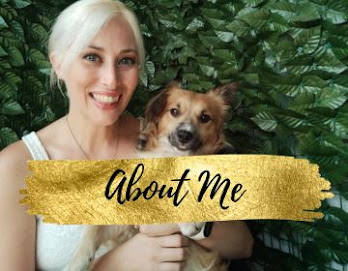How to Make Your Blog More Accessible to All Readers
In today’s digital world, accessibility isn’t just a nice-to-have — it’s essential. As bloggers, we have a responsibility to ensure our content can be enjoyed by everyone, including people with disabilities, neurodivergent readers, and those using assistive technologies.
Whether you're just starting out or have been blogging for years, this guide will walk you through practical steps to make your blog more accessible, inclusive, and user-friendly.
Disclosure: The FTC Disclosure Provision is a law that requires influencers to disclose when they are being paid to promote a product or service. So please know that if I'm not making money through affiliate links/sponsored content on the post you're currently reading, it's an oversight on my part and will be corrected soon. Read the full disclosure about all the legal stuff here.
Why Accessibility Matters in Blogging
According to the World Health Organization, over 1 billion people live with some form of disability. That’s a significant portion of your potential audience. An accessible blog isn’t only ethical — it’s good for SEO, increases engagement, and widens your reach.
1. Use Clear, Readable Fonts
Avoid fancy, decorative fonts that are difficult to read. Instead, use simple, sans-serif fonts like Arial, Verdana or Open Sans. Maintain a minimum font size of 16px to ensure readability on all devices.
Tip: Use high-contrast colours — such as dark text on a light background — to help users with visual impairments or dyslexia.
2. Structure Your Content with Proper Headings
Use heading tags (<h1>, <h2>, <h3>, etc.) to break your content into clear, logical sections. This helps screen readers navigate your content and improves SEO.
-
Use only one
<h1>tag per page (usually your post title) -
Organise subtopics with
<h2>and<h3>tags -
Avoid using bold text as a substitute for headings
3. Add Alt Text to All Images
Every image on your blog should include descriptive alt text. This helps blind or visually impaired users understand what the image is about using screen readers.
alt="photo"alt="A woman sitting at a laptop writing a blog post"Bonus: Alt text also helps your images appear in Google Image search, improving your SEO.
4. Use Descriptive Links
Avoid vague phrases like “Click here” or “Read more.” Instead, use descriptive anchor text that clearly explains where the link will take the reader.
E.g. Download our free blogging checklist and not Click here for checklist
5. Include Captions and Transcripts for Multimedia
If your blog includes videos or audio content (like a podcast episode), always provide:
-
Captions for videos
-
Transcripts for audio content
This benefits users who are deaf or hard of hearing, as well as those who prefer to read rather than listen.
6. Avoid Flashing or Moving Content
Avoid animations, pop-ups, or flashing images that can be distracting — or in some cases, trigger seizures or migraines. If you must use motion or video, provide a clear pause or stop button.
7. Use Plain English Wherever Possible
Accessibility isn’t just about technology. It’s also about language. Write in plain, clear English. Avoid jargon or overly complex language unless necessary — and if you must use it, explain what it means.
Short sentences, bullet points, and plenty of white space also make your content easier to digest.
Final Thoughts: Accessibility Is an Ongoing Practice
Making your blog more accessible doesn’t have to be overwhelming. Even small changes can make a big difference for readers who rely on assistive technology or face barriers when browsing the web.
By embracing inclusive blogging practices, you’re not just improving your site — you’re showing that your content is for everyone.
Have You Made Your Blog More Accessible?
If you’ve implemented any of these tips — or discovered others that work — let me know in the comments. Let’s make the blogging world more inclusive, one post at a time.


.jpg)



.jpg)












0 comments